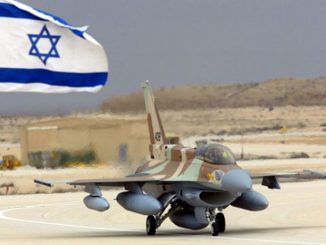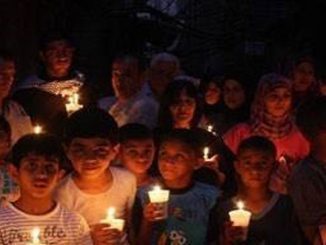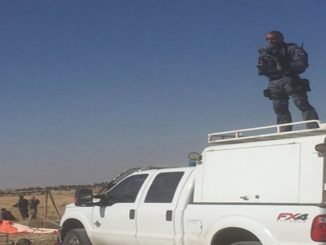
Amnesty International says the Israeli military units have most recently striken Gaza with white phosphorus artillery
Amnesty International, on Friday, said its Crisis Evidence Lab on Friday has verified that Israeli military units striking Gaza are equipped with white phosphorus artillery rounds.
“We are investigating what appears to be the use of white phosphorus in Gaza, including in a strike near a hotel on the beach in Gaza City,” the Rights group said in a statement.
It said white phosphorus burns at extremely high temperatures when exposed to air and can continue to burn inside flesh,adding that it causes horrific pain and life-changing injuries and can’t be put out with water
“This is why white phosphorus should never be used in civilian areas. Gaza is one of the most densely populated areas in the world. As we continue to closely investigate these deeply concerning cases,” the organisation added.
“Amnesty urges Israel to respect IHL at all times, civilians must be spared.”
The statement came hours after the Human Rights Watch (HRW), late Thursday, said it verified videos showing multiple airbursts of artillery-fired white phosphorus over Gaza and Lebanon on 10-11 October.
“Israel’s use of white phosphorus in military operations in Gaza and Lebanon puts civilians at risk of serious and long-term injuries,” the HRW said.
Here’s Amnesty International’s statement:
Israel used white phosphorus in Gaza civilian areas:
The Israeli army used white phosphorus, a weapon with a highly incendiary effect, in densely populated civilian residential areas of Gaza City, according to indisputable evidence found an Amnesty International fact-finding team which reached the area last Saturday.
When white phosphorus lands on skin it burns deeply through muscle and into the bone, continuing to burn until deprived of oxygen.
Amnesty International’s delegates found still-burning white phosphorus wedges all around residential buildings on Sunday. These wedges were further endangering the residents and their property; streets and alleys are full of children playing, drawn to the detritus of war and often unaware of the danger.
The carrier shells which delivered the wedges were also still lying in and around houses and buildings. Some of these heavy steel 155mm shells have caused extensive damage to residential properties.
“Yesterday, we saw streets and alleyways littered with evidence of the use of white phosphorus, including still burning wedges and the remnants of the shells and canisters fired by the Israeli army,” said Christopher Cobb-Smith, a weapons expert who is in Gaza as part of the four-person Amnesty International team.
“White phosphorus is a weapon intended to provide a smokescreen for troop movements on the battlefield,” said Cobb-Smith. “It is highly incendiary, air burst and its spread effect is such that it that should never be used on civilian areas.”
Donatella Rovera, Amnesty’s researcher on Israel and the Occupied Palestinian Territories said that such extensive use of this weapon in Gaza’s densely populated residential neighbourhoods is inherently indiscriminate. “Its repeated use in this manner, despite evidence of its indiscriminate effects and its toll on civilians, is a war crime,” she said
When each 155mm artillery shell bursts, it deploys 116 wedges impregnated with white phosphorus which ignite on contact with oxygen and can scatter, depending on the height at which it is burst (and wind conditions), over an area at least the size of a football pitch. In addition to the indiscriminate effect of air-bursting such a weapon, firing such shells as artillery exacerbates the likelihood that civilians will be affected.
“Artillery is an area weapon; not good for pinpoint targeting. The fact that these munitions, which are usually used as ground burst, were fired as air bursts increases the likely size of the danger area,” said Chris Cobb-Smith.
Among the places worst affected by the use of white phosphorus was the UNRWA compound in Gaza City, at which Israeli forces fired three white phosphorus shells on 15 January. The white phosphorus landed next to some fuel trucks and caused a large fire which destroyed tons of humanitarian aid.
Prior to this strike, the compound had already been hit an hour earlier and the Israeli authorities had been informed by UNRWA officials and had given assurance that no further strikes would be launched on the compound.
In another incident on the same day a white phosphorus shell landed in the al-Quds hospital in Gaza City also causing a fire that forced hospital staff to evacuate the patients.



